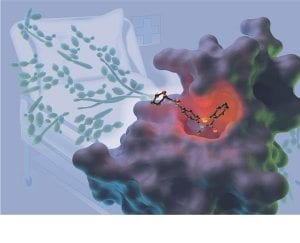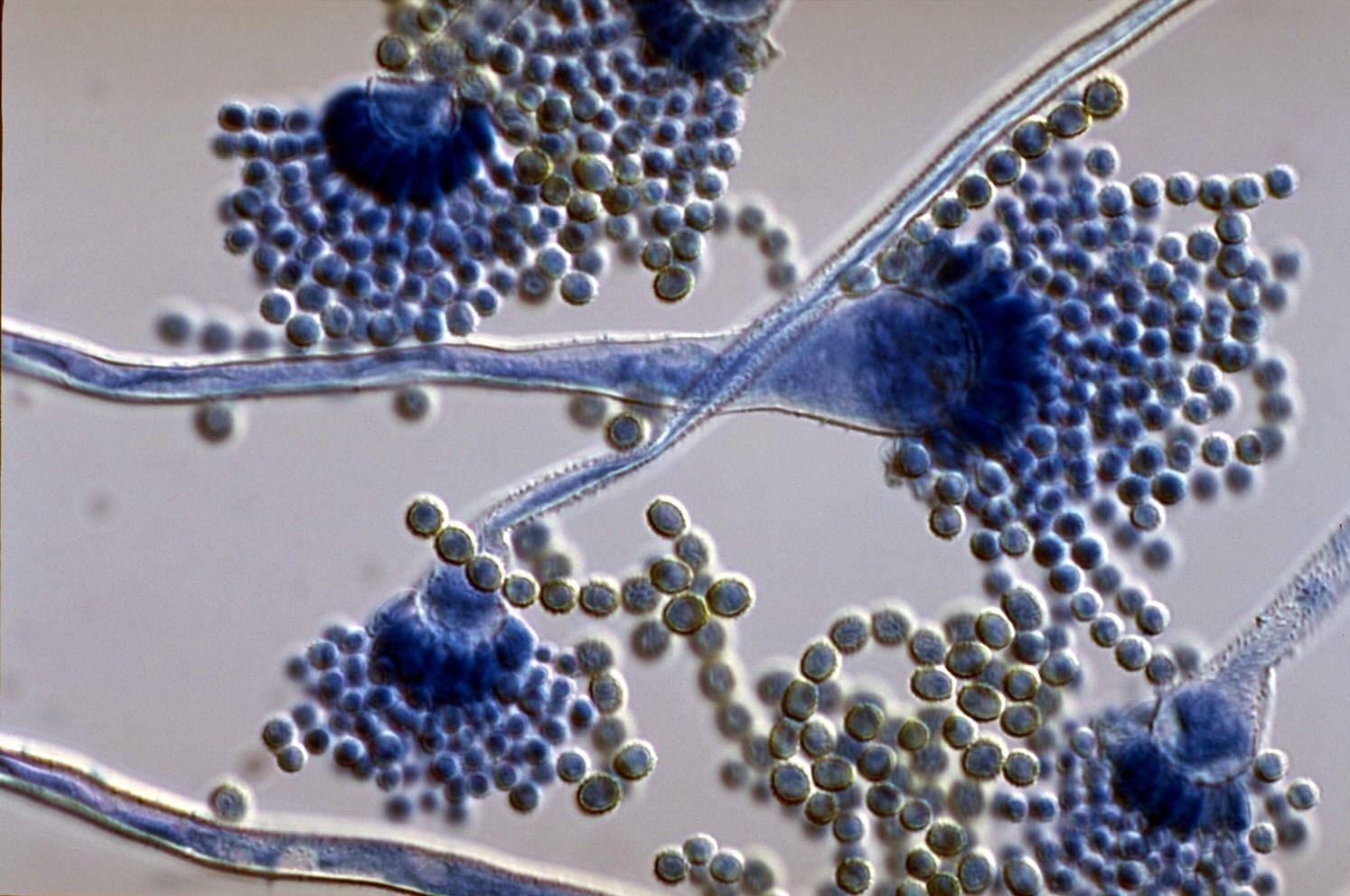
Deadly fungal infections are becoming resistant to common treatments, but a team of researchers from USC and from France have found a potential innovative solution.
Each year, invasive fungal infections sicken an estimated 2 million people worldwide and kill nearly 800,000 – but a team of international scientists have discovered a new approach for antifungal drug treatments.
Researchers from USC and France identified that a gene-regulating protein, Bdf1, is critical for the survival of the pathogenic fungus, Candida albicans.
“We have shown that Bdf1 is an important new target for drug design,” said Charles McKenna, a senior author of the study who is a professor of chemistry and pharmaceutical sciences in the USC Dornsife College of Letters, Arts and Sciences. “Our findings show that compounds that bind to this target will disrupt the growth of the fungus, opening the way to novel drug treatments for fungal disease.”
The French scientists who led the study with McKenna were Jérôme Govin and Carlo Petosa, both at the University of Grenoble Alpes.
Rising health threat 
The fungus, C. albicans, is an aggressive pathogen that in healthy individuals is normally held in check by the immune system. However, people with a weakened immune system, including patients who have cancer, HIV or autoimmune diseases, are susceptible to the infection, which can be life-threatening, McKenna said.
The team’s findings, published on May 18 in the journal Nature Communications, may prove timely. Fungal infections such as candidiasis are increasingly resistant to drug treatments.
Each year, an estimated 46,000 patients in the United States become infected with invasive candidiasis, according to the Centers for Disease Control and Prevention.
“When susceptible people develop candida infections, the fungus may enter the bloodstream. If treatment is unsuccessful, it has a very high mortality rate – in the 40 percent range,” McKenna said. “We have a very limited number of drugs that are effective in treating such systemic infections. Unfortunately, like many other pathogens, C. albicans is increasingly resistant to the few available drugs, raising the stakes for patients, and fresh approaches are urgently needed.”
Learn more: Blocking gene expression to combat deadly fungal infection
The Latest on: Antifungal drug treatments
[google_news title=”” keyword=”antifungal drug treatments” num_posts=”10″ blurb_length=”0″ show_thumb=”left”]- Common Questions About Dog Health Answered By Doctors.on May 1, 2024 at 2:28 pm
It's important to consult a veterinarian for an accurate diagnosis and treatment plan.This article provides an overview of remedies for a dog's yeast infection, as well as information on a dog wart ...
- Global Ringworm Treatment Industryon April 30, 2024 at 5:42 am
Global Ringworm Treatment Industry is projected to grow from US$ 8.38 Bn in 2023 to US$ 13.91 Bn by 2033, at a CAGR of 5.2% ...
- Global Tinea Pedis Treatment Market Set to Skyrocket, Reaching US$ 2.24 Billion by 2032on April 22, 2024 at 8:01 pm
Tinea Pedis Treatment Market is projected to an impressive US$ 2.24 billion by the end of 2032, reflecting a remarkable CAGR of 5.2%.
- How to Deal a Knockout Blow to Dying Toenail Funguson April 19, 2024 at 8:38 am
You’ve been battling that stubborn toenail fungus for months, trying every trick in the book to regain control of your feet. The discolored, thickened nails have shattered your confidence and kept you ...
- Unruly Gut Fungi Can Make Your Covid Worseon April 19, 2024 at 4:01 am
An infection can upset your microbiome, and if certain gut fungi run riot, this can kick the immune system into overdrive.
- Social Media Claims This FDA-Approved Pill Can Slow Down Aging. Can It?on April 16, 2024 at 4:01 am
Age discrimination is rampant, and beauty standards favor youth. So it’s no wonder that people do anything they can to push back on aging, whether that’s using Botox for fewer wrinkles, hair dye to ...
- The threat of fungal infections is growing. Why is it so hard to make new drugs?on February 11, 2024 at 3:06 am
But the much-needed fungicides can render critical antifungal drugs useless. That’s because many fungicides have the same molecular target as antifungal drugs, including existing drugs ...
- First Cases of Drug-Resistant Ringworm Detected in U.S.on May 17, 2023 at 4:59 pm
Scientists studying the condition suspect that the fungus may have become drug-resistant due to the misuse and overuse of topical antifungal treatments and corticosteroids (anti-inflammatory ...
- Antifungal tolerance in Candida auris contributes to treatment failureon March 22, 2023 at 5:00 pm
auris) to all three classes of antifungal drugs commonly used to treat invasive candidiasis. Microbial infections are caused by harmful bacteria, fungi, or viruses and affect millions worldwide.
- Antifungal drug kills TB bugon August 17, 2018 at 8:30 am
Now, biologists at The University of Manchester have shown that chemicals called azoles - the active agent in many antifungal drugs - kill the TB bacteria, and could be effective in tackling the ...
via Google News and Bing News










